In the spring of 2013, I tried a tisane made from the dried leaves of a Hawaiian coffee plant.
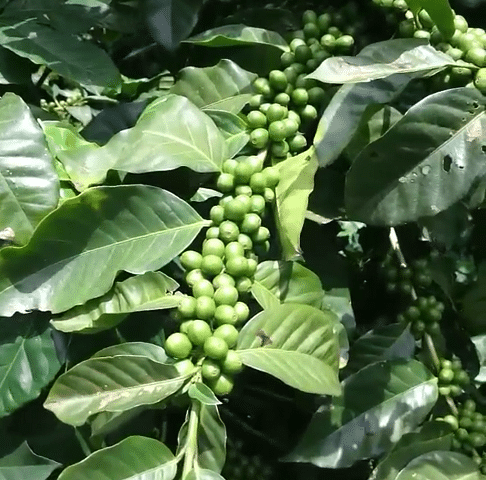
And I wasn’t a fan.
The flavor was not overly offensive, just . . . herbal. And nutty. Nutty-herbal. Okay, on “Internet” paper that doesn’t sound too terrible or unappetizing, but it wasn’t very palatable, either. It reminded me of nettle leaf that had gone slightly off. It would take another two years before I’d revisit the prospect of trying it again.
At World Tea Expo 2015, such an opportunity arose. The culprit? Wize Monkey.
Wize Monkey was the brainchild of Max Rivest and Arnaud Petitvallet. I’m not certain how they even came up with the idea for the company, but I’m pretty sure it went something like this.
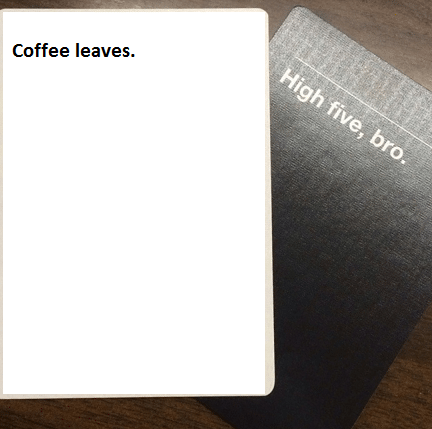
When I met them, I was surprised at how young they were. They were handsome and charming lads, and—stranger still—they were nice. Like pledges to the world’s most Canadian frat house.

They made quite a splash at that year’s Expo, they even won an award or two.

What made them so unique? Let’s dig in.
In 2012, they both had the brilliant idea of starting a tea company, but instead of focusing on the usual Camellia sinensis malarkey, or the other usual herbals, they went another route. Since both Max and Arnaud also had a passion for all things . . . Latin? I guess? They turned to a country that really didn’t get a lot of good press.
Nicaragua. In this case? The coffee fields of Matagalpa, Nicaragua.
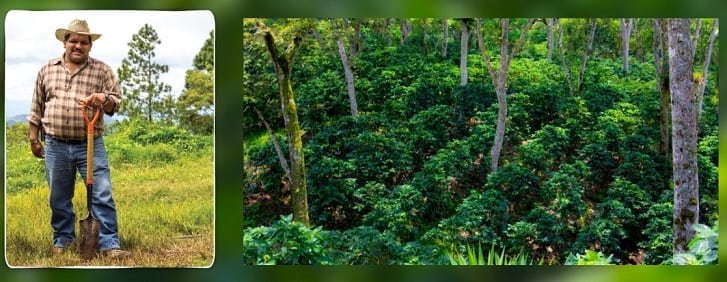
Growing coffee is in high demand, and pretty much always will be. The problem, however—besides the grueling labor intensiveness of it all—is the short growing period. Coffee cherries can only be harvested three months out of the year. Farmers have to make ends meet in other ways the rest of the year.
One of their farming partners, Armando, says as much in this video.
(Armando is awesome. I want to meet him.)
The answer—as we tea people say—was in the leaves. In the off-season, what if farmers harvested coffee leaves? They would, then, have a way of sustaining their farming practice without the need for outside, supplemental income. The real challenge was making a palatable product.
Max and Arnaud already had one advantage. The leaves they were sourcing were from gardens that specialized in organic, shade-grown arabica coffee. Shade equated to an abundance of leaves. The puzzle lay in how best to process those leaves.
When I visited their Expo booth in 2015, they explained that—instead of simply drying the leaves—they went a different route; semi-oxidation. Kinda like the way Darjeeling and Nepal approach oolongs. (Sidenote: Oolongs are kill-greened then semi-oxidized. Not semi-oxidized alone. But that’s a subject for another blog.)
I tried several of their wares that day, and . . .
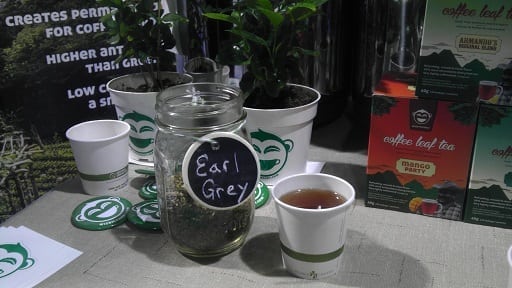
. . . was rather impressed.
Semi-oxidation did make a difference in the taste. It boosted the natural nuttiness of the leaves, all the while dialing down the gamey, herbal quality. But even Max admitted they were still working out the kinks in processing.
In the winter of 2015, Team Wize Monkey got a hold of me, wondering if I was interested in trying their autumn batch. I expressed interest aplenty, and soon after, they mailed it off. Not sure why, but my exploration of that sample got lost in the shuffle. Too many teas, too little time.
I did, however, take it to work with me a couple of times.
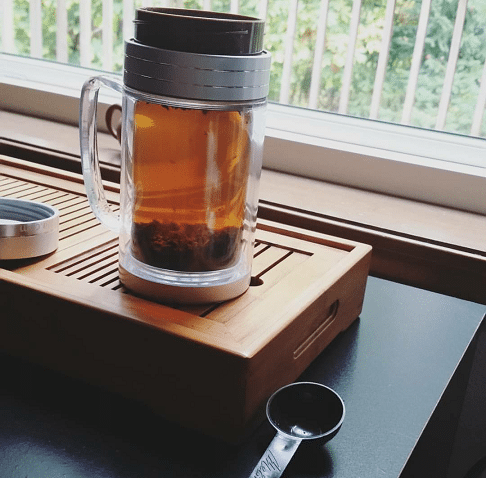
Got about five good infusions out of that sucker.
In June of 2016, World Tea Expo rolled around again. They didn’t have a booth this year. Instead, they were wandering the convention floor with thermoses and bagged samples. Only “kinda” sketchy.

I encountered them, and they passed on one of their latest test batches. Apparently, this time, they were playing around with larger leaf cuts, and even working out the percentage of oxidation to the leaves. I tried a couple of different versions from their sketchy thermoses, but they also left me a sample bag for further exploration.
That’s when I finally decided I’d better get to writing about this stuff. So far, they’d been gracious enough to hand me samples twice, and I had yet to roll out a blog about them. On top of that, comparing two different years’ growing seasons of a tea or tisane was totally my thing. Now was the time.
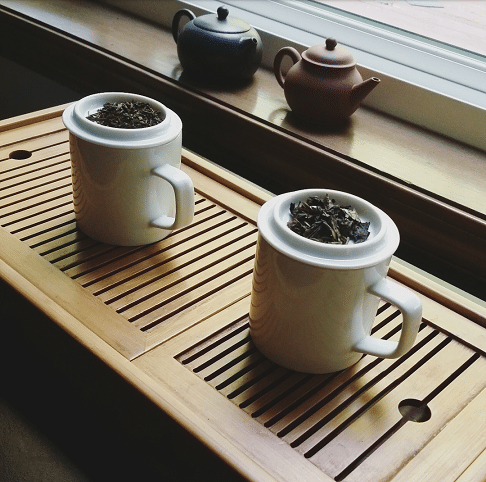
For brewing, I approached both the exact same way. I put roughly a teaspoon of leaf material in a 6oz. Ceylon steeper cup. I used boiled water for each, and an infusion time of three minutes. Standard fair for a black tea or any other herbal.
September, 2015
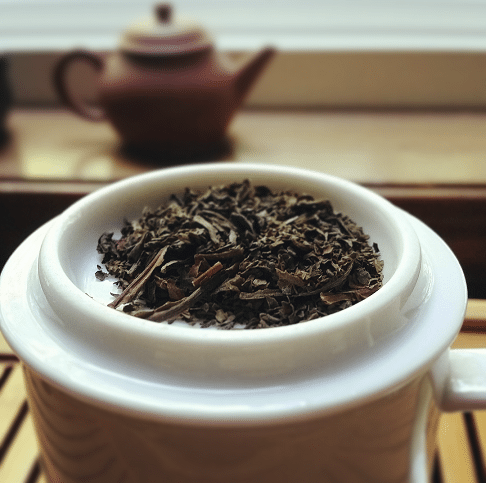
The leaves were not really leaves, anymore. They were pretty much fannings grade or close to it, likely to benefit from more of a caffeine punch per leaf service area. Oxidation also seemed pretty heavy. If I were a betting man, I’d say 70% oxidized. The aroma also betrayed a bit of the roasting technique used. The smell was nutty, herbaceous and inviting in an odd sort of way. The “nutty-herbal” factor was the aspect that normally turned me off in straight-up green coffee leaf, but with the added roast/oxidation it was a welcomed note.
The liquor colored a medium, deep brown. Not quite the copper color of a black tea, but definitely in line with a hearty herbal. The nuttiness was strong with this one, but it was more of an oolong-like nuttiness once brewed. A bit of roast came through on the back-whiff, yet not much else. Flavor-wise, the intro was smooth, velvety even, before delving into some of the more herbal characteristics. It was quite similar to roasted Yaupon holly in its delivery, but not as sweet. However, the caffeine kick was a lot smoother—like the slow ascent of a roller coaster.
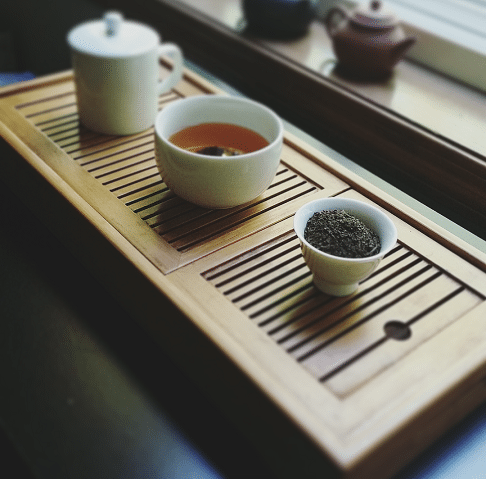
I can attest that the 2015 was a smooth character pretty much throughout the day. I . . . may have cheated several months back and relied on it for a work day, like I said. Like, the entire work day. Why? No sleep the night before.
May, 2016
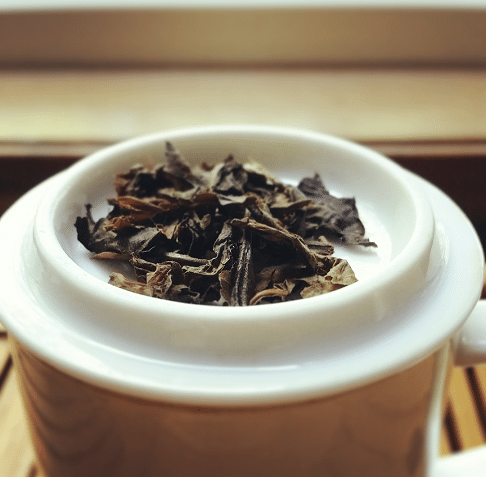
This couldn’t have been more different from its older kin. Instead of fannings grade, the leaves were given a more BOP cut, and the oxidation level seemed lighter—50%-ish, maybe? That also affected the aroma for the better. None of the typical, nettle-like coffee leaf leanings were present. No nutty herb smell, just herb—like lemon verbena crossed with mint.
The liquor for this year’s brewed up considerably lighter. Instead of going for brown, it stayed in green tea gold territory. Even weirder? It smelled like a green tea, but not the Chinese or Japanese types. No, it was more like a Taiwanese green or a Russian green. (Yes, I know what those are like.) The aroma was deep, citrus-sweet, with a tickle of mint.

The flavor floored me.
To the good ol’ taste buds this was night to 2015’s day. It started off a bit like a Li Shan oolong on the forefront before dipping into lemongrass territory in the middle. The finish was . . . something else entirely. Not sure how to put it . . . sentient flowers. (Sorry, that’s all I’ve got.)
Was there a clear favorite?
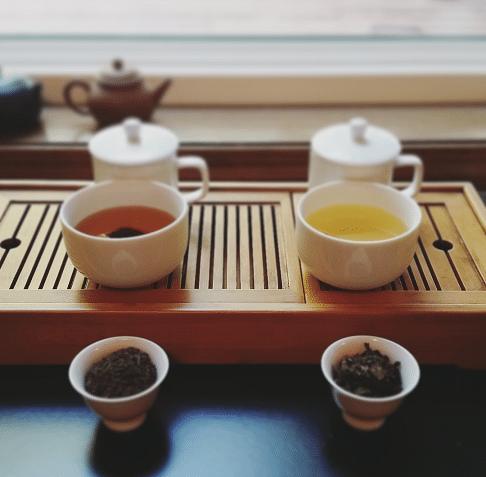
Oh yeah. The second one. By a dead quarter mile.
At a ratio of larger leaf-cut, plus a slightly dialed-down oxidation level, they were able to get rid of any unpalatable aspects the leaf naturally possessed. Sure, the taste was still herbal, but they were able to bring out other nuances that I never knew existed. That isn’t to say I didn’t like the September product; I did! But that was more of a utilitarian version. That version served to get the job done. The more broken pekoe-ish version was for the tea/tisane connoisseur. That was the right direction to go in for a specialty product.
At the time of this writing, they were still playing around with different versions of coffee leaf tisane. Including whatever this is.
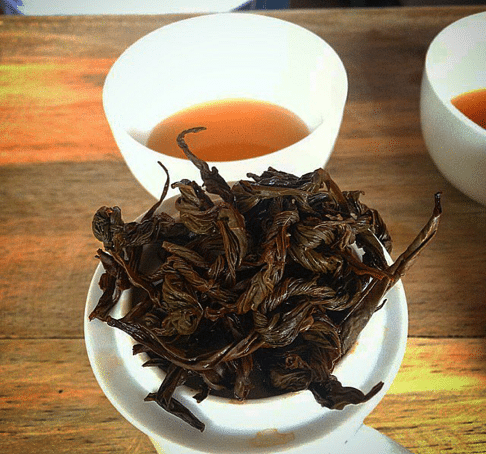
Seriously, I want this in my mouth. Right now.
There were even teases on Instagram about playing around with kill-greening the leaves. Like an actual oolong.
From my pajama’d vantage point, it would seem their future is promising. Heaven knows they have their marketing strategy pegged. That monkey is rather welcoming. I can’t wait to see (and taste) what they do next.
High five, bros.
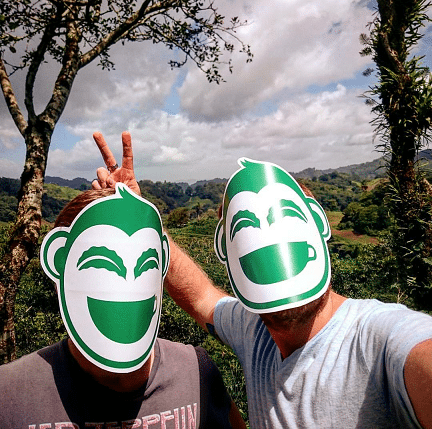
To check out their products, go HERE.

Leave a Reply